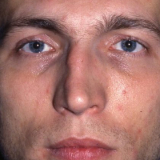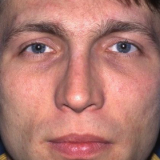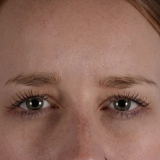Depending on the procedure, some plastic surgeries can be performed in our clinic using very little anesthesia. More complicated procedures require the patient to be asleep for his or her comfort and may be performed in a surgical facility. Electing to undergo facial plastic surgery can create a more attractive, youthful appearance. It is also a major decision with many factors involved. That’s why our team at Colorado Facial Plastic Surgery in Englewood, CO wants our patients to be fully informed with all the important information, including the different types of anesthesia that will be used for their procedure.
Here is a complete review of the four different types of anesthesia used in facial plastic surgery:
Contents
Local anesthesia
This type does not require an anesthesia provider to be present. The surgeon will use a mixture of lidocaine (a numbing agent) with epinephrine (blood vessel constrictor) for injection into the skin. The numbing effect starts within 15 minutes and can last up to two hours. The patient will not feel any sharp or uncomfortable pain if done correctly but will feel movements and light pressure. This form of anesthesia is often used for minor procedures that can be done in-clinic, such as biopsies, skin cancer removals, and closure of lacerations.
Oral sedation
Pills can be taken to help provide a sedating and anxiety-reducing effect. Examples would be Halcion® and Versed®. Once taken, the effect begins within 15 – 30 minutes and can last up to two hours. Patients describe the feeling as being very relaxed and sleepy. This is ideal for patients who are nervous about having procedures performed while still awake. It’s important to remember that you can’t drive if you’ve taken this medication to or from your procedure.
Monitored anesthesia care
This is often referred to as “twilight sedation.” An anesthesia provider will insert an IV and administer different medications to help the patient reach a deeper plane of sedation. During this time, all the vitals are monitored while the patient is in a sleep state. This does not involve the placement of a tube within the throat. Monitored anesthesia care is ideal for healthy patients undergoing a more involved procedure. This can be done in an office setting and, again, will require that the patient has a driver to take them to and from the procedure.
General anesthesia
This type of anesthesia is performed in a hospital or outpatient surgery center setting. An anesthesia provider will place a tube within the throat, and the patient goes into a deep sleep. During this time, the patient feels no pain and is not conscious of the surroundings. This is ideal for patients undergoing longer, more involved procedures and those with other significant medical problems, such as heart disease and COPD. Some patients experience nausea, vomiting, and lethargy for a couple of days afterward. Like the prior two types of anesthesia, a driver will be required to assist the patient.
Your complete comfort is our goal at Colorado Facial Plastic Surgery
These are the four different types of anesthesia that can be used during facelift plastic surgery. In certain cases, these can be used in combination with one another, but your surgeon will determine which anesthesia works best for you to optimize results and comfort. At Colorado Facial Plastic Surgery, we want all our patients in Englewood, CO to be as comfortable as possible while under our care. If you are thinking about improving your appearance with facial plastic surgery, schedule a consultation with our facial plastic and reconstruction surgeons today.







